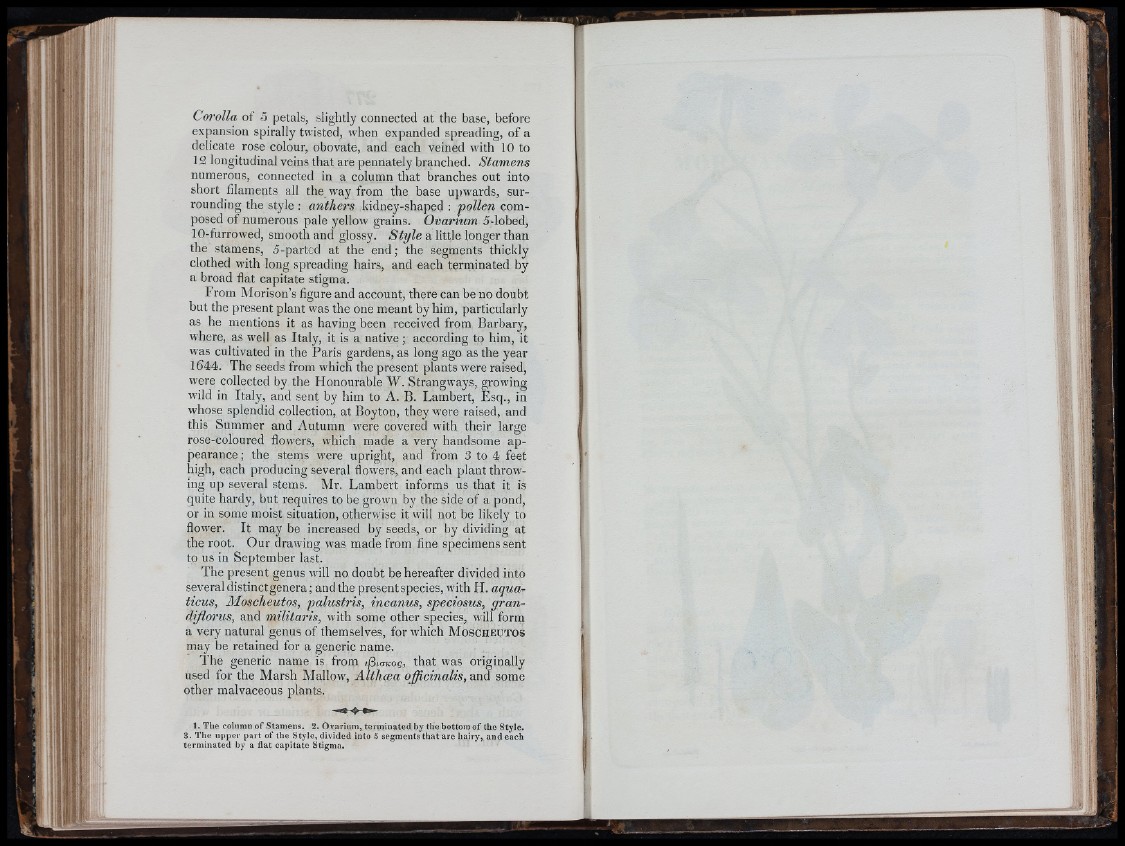
Corolla of o petals, slightly connected at the base, before
expansion spirally twisted, when expanded spreading, of a
delicate rose colour, obovate, and each veined with 10 to
12 longitudinal veins that are pennately branched. Stamens
numerous, connected in a column that branches out into
short filaments all the way from the base upwards, surrounding
the style ; anthers kidney-shaped ; pollen composed
of numerous pale yellow grains. Ovarium 5-lobed,
10-furrowed, smooth and glossy. Sty le a little longer than
the stamens, 5-parted at the end; the segments thickly
clothed with long spreading hairs, and each terminated by
a broad flat capitate stigma.
From Morison’s figure and account, there can be no doubt
but the present plant was the one meant by him, particularly
as he mentions it as having been received from Barbary,
where, as well as Italy, it is a native; according to him, it
was cultivated in the Paris gardens, as long ago as the year
1644. The seeds from which the present plants were raised,
were collected by the Honourable W. Strangways, growing
wild in Italy, and sent by him to A. B. Lambert, Esq., in
whose splendid collection, at Boyton, they were raised, and
this Summer and Autumn were covered with their large
rose-coloured flowers, which made a very handsome appearance
; the stems w'ere upright, and from 3 to 4 feet
high, each producing several flowers, and each plant throwing
up several stems. Mr. Lambert informs us that it is
quite hardy, but requires to be grown by the side of a pond,
or in some moist situation, otherwise it will not be likely to
flower. It may be increased by seeds, or by dividing at
the root. Our drawing was made from fine specimens sent
to us in September last.
The present genus will no doubt be hereafter divided into
several distinctgenera; and the present species, with H. aqua-
ticus, Moscheutos, palustris, incanus, speciosus, gran-
difloriis, and militaris, with some other species, will form
a very natural genus of themselves, for which M oscheutos
may be retained for a generic name.
The generic name is from tßtaKog, that was originally
used for the Marsh Mallow, Althcea officinalis, and some
other malvaceous plants.
j I
1. The column o f Stamens. 2. Ovarinm, terminated by the bottom o f the Style.
3. The upper part of the Style, divided into 5 segments that are hairy, and each
terminated by a flat capitate Stigma.